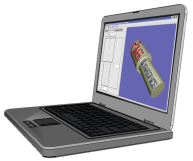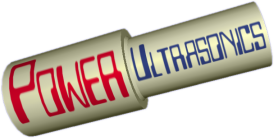A new online ultrasonics components store has just opened at www.UltrasonicsWorld.com. Check their amazing prices for replacement ultrasonics components, fully compatible with the major manufacturers' originals at a fraction of the cost.
You are here
Good News!! ultrasonic assised drilling
Hi Chris
As you remember, I sent an email near 5 month ago about Ultrasonic Drilling. The good news is I made it and tested it this week!! It works like hell.
I finished Ansys analysis near 2 month ago. It took almost a month to learn how to work with the software and after another month I succeeded in running the first analysis. At first I used stepped horn on analysis but I couldn’t reach 20KHz resonance frequency with it (Because of the addition of drill and stud screws and the size of either ends) So I designed a new horn type!! I mixed conical and stepped horn together!! After that I reached the 20 KHz resonance frequency with very good stress safety factor (about 3.5) . Then I started to make the horn ( I used AL7075 as the horn material). This Monday after I assembled all acoustic head’s parts together, I used Network Analyzer device to check what the resonance frequency of whole system is. The answer was unbelievable! It was exactly the same as the Ansys analysis. I must say that resonance frequency is directly related with the length of the drill and how much its out of the horn. I came to this conclusion with both Ansys analysis and Network Analyzer device. I strongly recommend Ansys modal analysis for designing acoustic head’s parts. The horn which I used is very complicated. It is designed to install drill on it and 4 stud screws will be fasten on it. I simulated the exact horn with Ansys and the result was accurate.
That day I did a test on brick, stone and ceramic, results were unbelievable. It drills every hard material with out adding any pressure to the system, with very simple HSS drill and you know I didn’t rotate the drill!!
Actually I haven’t tested it on any metal yet (My thesis subject is Ultrasonic Assisted Drilling on Aviator Alloys, such as Inconel.)
Fortunately nothing happened to the drill and it’s own resonance wasn’t near the system resonance.( you were concerned about this matter)
I recorded the tests with my camera and I also took some photos. If you want I can send them to you. (Just tell me for which address should I send them to)
I must thank you very much because I learned a lot from your website. I just have one request from you. Could you possibly make the FEA chapter of your thesis available online? It will be very useful for all of us.


Re: Good News!! ultrasonic assised drilling
Hi Bahman,
Thanks for the update - that's terrific!
It's good that you went ahead with the full FEA analysis. Yes, it does take a lot of work to get to the stage where you can get useful results but when you get there it's worth it! Ansys gave me some excellent results too, despite the limitations on model size imposed by the low-powered computers available to me at the time.
I'm not surprised you're getting good results with hard, brittle materials - those are normally the ideal for ultrasonic drilling. It will be interesting to see how it works on metals. Perhaps you'll get more of the ultrasonic machining effects as seen on lathe tools.
I'd love to see the pictures. Not sure if you wanted my mail or e-mail address but you can find both on the [url=http://www.powerultrasonics.com/feedback.html]contact page[/url] on this site. I would also like to be able to show them somewhere on this site with your permission - if you do send something please let me know whether this would be ok and what attribution you would prefer.
On the thesis, I do have a full copy available online for download. The aim is to offer this free to researchers / students or at a small charge to commercial organisations - one more job that I never quite seem to get to... Anyway if you'd like a copy please contact me privately via PM or e-mail and I'll send you a login.
Thanks again for the good news. I hope you'll be back again with more as your research progresses.
Regards
Chris